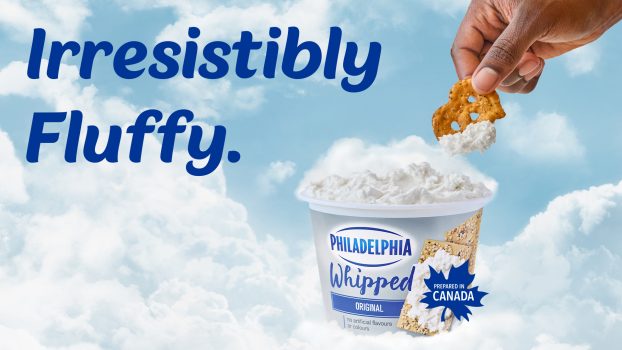Do you lack a certain gleam in your smile? Pricey dental visits might help put the gleam back, but might also rob the glint in your wallet.
Luckily, thanks to the whitening trend in oral care, you could try any number of ways to perk up those pearly whites at a reasonable price. But which of the many new offerings should you choose?
In order to put their products front and centre in the minds of consumers, oral care marketers are focusing on product innovation, dental professional endorsement and public relations tactics to cut through the myriad of products currently lining the shelves of drugstores.
According to AC Nielsen’s Spring 2002 Consumer Insight magazine, the teeth whitening packaged goods market is nearing the US$300 million mark and sales growth is reaching 80%, at least partially due to aging boomers seeking whiter teeth.
‘It’s just become huge in the last little while,’ says Irene Chin, assistant director of oral health at Toronto-based Johnson & Johnson, who adds that oral care has gone from a hygienic to a more cosmetic focus. ‘Manufacturers are raising the bar for products, which conditions consumers to know what they want. High performance is a requirement now.’
GlaxoSmithKline, based in Oakville, Ontario, has featured Aquafresh Whitening toothpaste in its oral care line since 1995, and according to their communications department, they were the first mainstream brand to do so. Now, they’ve introduced the Flex Whitening toothbrush, which has a ‘combination of rubber polishers and bristles designed to give a whiter, brighter smile.’
GlaxoSmithKline has also added two line extensions to Aquafresh Whitening – Aquafresh MultiAction Whitening and Aquafresh Advanced Freshness Whitening. In addition, its Sensodyne Whitening plus Tartar Fighting brand of toothpaste has been available since 2000. ‘Innovation is extremely important in [the oral care] category,’ says a company spokesperson. ‘New products with innovative features and benefits drive consumer purchases.’
Meanwhile, Procter & Gamble’s Crest was the first brand to introduce an at-home whitening system. Targeted at women 30 to 54, Whitestrips have been available in Canada for a little over a year now. The product has been marketed on television, in women’s beauty magazines, on the radio, in-store and via public relations methods. Olympic gold medal figure skaters Jamie Sale and David Pelletier were also used as spokespeople to launch the product in Canada.
P&G spokesman Win Sakdinan is reluctant to reveal too much about the marketing strategy of the product, saying, ‘We’re in a major lock with Colgate right now,’ though he does reveal that in research, consumers wanted an efficient, but reasonably priced tooth whitening product. ‘Crest Whitestrips has brought teeth-whitening to the masses. Consumers are starting to view [it] as part of their daily personal care routine.’
When Crest Whitestrips launched last February, the product was priced at $65, but has since been lowered to a more reasonable $45 to $50. But will consumers shell out what amounts to a big wad of coin on such a product?
The results would suggest yes: as of 2002, Crest Whitestrips was a US$200-million business, according to Procter & Gamble’s Web site. And Ken Wong, a marketing professor at Queen’s University in Kingston, Ont., stresses that while the pricepoint may be high, it’s still cheaper than seeking whitening treatments at the dentist, which can cost in the thousands.
‘If you think about innovation in this category, the first thing that comes to mind is Crest,’ he says. ‘Despite all of the cosmetic crazes [in the past], they have always stayed with the cavity fighting positioning. They have leveraged that brand equity effectively. When Crest came out with Whitestrips, they legitimized this aspect. They’re trying to get a little bit more out of the brand name by extending into other categories.’
Colgate also entered the whitening fray with Colgate Total Plus Whitening, Colgate Sensation Whitening Toothpaste and last year’s introduction of Colgate Simply White – a paint-on whitening gel. Priced at $25 for a two-week supply, the latter is about half the cost of Crest Whitestrips. Colgate has positioned the product as an easy, cost-effective way to whiten teeth.
According to a statement from Ian Cook, EVP and president of Colgate North America, ‘Colgate Simply White eliminates the hassle associated with current at-home whitening products because it does not require trays, strips or cumbersome devices.’
P&G, in turn, has since countered that mouth saliva renders Simply White ineffective. A recent ad for Crest Whitestrips by D’Arcy Masius Benton & Bowles in New York also takes jabs at Colgate’s brand – a woman in the commercial can’t speak, apparently because she is using Simply White on her teeth, hinting that the Crest brand adheres better to teeth.
Wong says this is a fairly aggressive yet effective strategy. ‘[There is] a clear functional difference between the two products. It would be different if they compared the whitening power of toothpastes. [But] they came up with an ease of use advantage.’ Further, he says that product innovation in the oral care category is ‘a pattern you’re seeing across the board. It reflects the evolution of competitive strategy.’
The whitening category is even experiencing further competition from traditionally underrepresented oral care areas – namely, flossing. Johnson & Johnson launched Reach Whitening Floss in February 2001.
J&J’s Chin says that since the launch, the product has done very well with consumers, though she doesn’t have specific figures. Research showed that consumers wanted basic floss cleaning, along with a secondary benefit. Because of their interest in maintaining white teeth and a healthy smile, Whitening Floss was born. Since 70% of stains develop between teeth, according to J&J, the product is positioned as the ‘first floss clinically proven to whiten between teeth.’
The marketing of Reach Whitening Floss took a two-pronged approach: targeting both the consumer and dentists. The product is advertised in professional dental journals so that dentists can order it and give it away to patients with a toothbrush.
To reach the consumer, J&J took a PR angle – the brand recently held its third annual Reach Whitening Floss Survey that polled Canadians to rate celebrities with the best smile. According to a 2001 Ipsos-Reid poll, only 37% of Canadians floss their teeth daily. Chin says the survey seeks to remind the consumer of the need to floss by using the celebrity angle and engaging them in a fun, light-hearted way. This year’s most beautiful smile award went to singer Shania Twain.
In the survey’s first year, which was also the year the product launched, Chin says the press coverage was ‘beyond their expectations.’
This year’s survey ‘had great pick-up and created greater awareness’ but results were not as high as in the first year. Chin says they are also looking into direct mail possibilities, using a rented list of consumers, who will be sent product samples and coupons.
The trend is so white-hot, even the confectionery category is getting in on the action. Sugarless gum-maker Trident (owned by Pfizer/Adams) recently launched Trident White as its response to the whitening craze.
According to senior brand manager Jeff Rodriguez, the product extends the basic healthy teeth positioning of the core Trident brand, which is recommended by dentists. But while Rodriguez says most whitening gums are lacking in the taste department, Trident White delivers whitening benefits, along with fresh taste.
Research with consumers showed there was a desire for the gum in the Canadian market, says Rodriguez, and that Trident White resonated with consumers. The product is available in two flavours: peppermint and wintergreen.
An aggressive ad campaign, including TV, in-store and outdoor, was created by J. Walter Thompson in New York and was adapted by JWT in Toronto. Trident is competing in this area with the likes of GlaxoSmithKline’s Aquafresh gum, Church & Dwight’s Arm & Hammer Dental Care Baking Soda gum, and Colgate-Palmolive, which has Colgate Dental Gum.
Wong asserts that the ultimate hurdle for marketers in the oral care category will be to create products that deliver the benefits with the least amount of consumer behaviour change. He foresees that the next trend will be combination products – both Colgate and Crest are now offering toothpastes with mouthwash combined.
‘My guess is that consumers are looking for greater convenience – brushing your teeth has become a half-hour regimen.’ Another untapped area, notes Wong, is packaging. ‘We haven’t seen much innovation in this area. As the field gets more congested you start looking for every means of differentiation.’






















